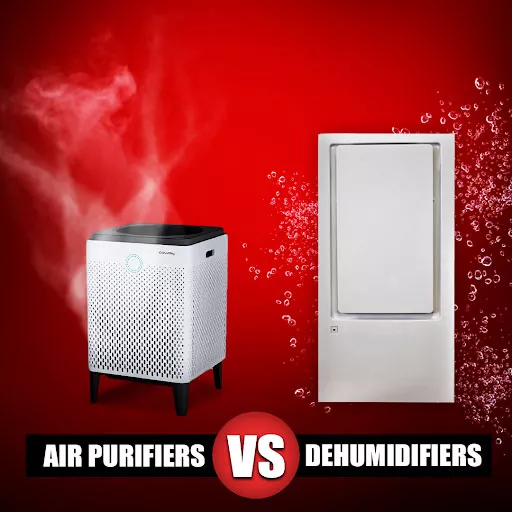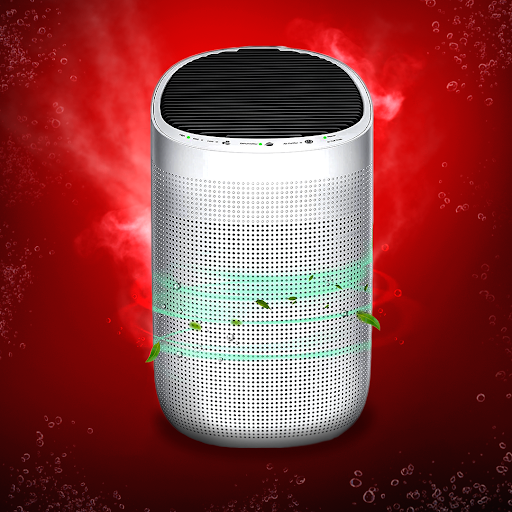Air Purifier vs. Wall Dehumidifier: Which One Do I Need?
The importance of clean air cannot be overstated. Whether you are looking to improve your health or simply want a more relaxing environment, it is important that the quality and type of contaminants in your home does not exceed safe levels established by government regulations. The air you breathe can have a significant impact on your health and quality of life.
If you want to improve your indoor air quality to avoid health issues, there are two major factors that need attention. Air purifiers do not work towards making sure moisture stay at optimum levels. They both work towards indoor air quality.
Air purifiers and wall dehumidifiers can often get confused with one another. Although both help to reduce allergens in a room, they function differently. If you are still undecided about whether to buy a wall dehumidifier or air purifier, then read along to learn their key differences.
Differences between Air Purifiers and Wall Dehumidifiers
What’s the difference between an air purifier and a wall dehumidifier? Air purifiers work by circulating clean air through a filter while wall dehumidifiers draw out moisture from the room helping to lower indoor relative humidity levels.
The filters in an air purifier are specially designed to capture all of the different types of particles and allergens that come into your home. This way, you can breathe easier without worrying about coming into contact with these harmful substances while cleaning or working around your house. Purifiers work by removing irritants from the air, such as dust mites or pollen which can trigger allergic reactions in some people with asthma. Air purifiers also clean surfaces so there’s less risk of developing bacterial infections caused by unhygienic living conditions.
Although air purifiers are great at getting rid of particles in the air, they can’t take away all allergens. Nevertheless, when used along with regular cleaning and sanitizing products, air purifiers have been shown to reduce asthmatic symptoms among people who suffer from allergies.
Humidity can have a huge effect on your home’s air quality, which is why it’s important to keep it under control. A wall dehumidifier does just that by taking in moisture from surrounding areas. With a wall dehumidifier, you can control the amount of moisture in your home. It draws air from one room and passes it over cold coils to condense on them before drawing more warm recycled airflow back into that same space.
A wall dehumidifier makes your house less hospitable for allergens and viruses. Wall dehumidifiers also help to prevent structural damage.
Which is better air purifier or wall dehumidifier?
The air purifier may be best for you if you want to reduce the number of allergens in your home (pet dander) and remove odors caused by mold or pets. If not, then a wall dehumidifier is usually the better choice as it will help lower relative humidity and issues associated with indoor moisture. You may especially need a wall dehumidifier in your house if you are living in coastal areas.
Do I need a wall dehumidifier if I have an air purifier?
If you have an air purifier, you may also need a wall dehumidifier if you are dealing with high humidity or other dampness issues. An air purifier may help your moisture problems but a wall dehumidifier is necessary because it removes excess water from rooms that can lead to mold growth and other dangerous conditions.
With a wall dehumidifier, you can improve your home’s air quality. By helping to reduce humidity levels and eliminating moisture from the atmosphere, it is easier to stop mold growth that could be causing problems like asthma or allergies. It also can minimize proliferation of dust mites, which are potential sources of harmful allergens in indoor environments.
Can you use a wall dehumidifier as an air purifier?
While wall dehumidifiers help reduce excess moisture and lower indoor humidity, they cannot clean the air as purifiers do. On the other hand, an air purifier doesn’t control or minimize the humidity levels in your home.
Do wall dehumidifiers improve air quality?
Humidity can have a serious effect on indoor air quality. A humid location can host allergens and can trigger many allergic conditions and health issues. Ideal humidity levels range between 35% and 50%. When the levels go above 60%, these conditions encourage mold and mildew growth. Moreover, dust mites, which are harmful to people with allergies and other health issues, thrive in moist areas. When you have control over your home’s moisture levels, you have better indoor air quality.
Air pollutants are usually to blame for poor air quality. When your home is humid, it can foster insect growth, support musty odor, and promote mildew in your rooms. These conditions can result in various health issues such as insomnia, headache, and fatigue. A wall dehumidifier makes managing your home’s interior moisture level possible and also generally improves indoor air quality.
Do I need a wall dehumidifier?
If you have moisture problems, then you should buy a wall dehumidifier. A wall dehumidifier is also the best choice if you need help removing excess indoor moisture. While an air purifier can remove mold spores from the air, it cannot remove moisture. By contrast, as wall dehumidifiers pulls excess moisture out of the air, mold and other contaminants find it much more difficult to thrive.
The Bottomline
The air inside your home is important to your health. Air purifiers and wall dehumidifiers work together to keep your indoor air safe and clean. A closer look at these two devices shows how each one does its own special job extremely well – an air purifier filters the air in the room to provide clean and safe air while a wall dehumidifier takes the moisture out of the air to help make homes allergen-free. Air purifiers and wall dehumidifiers are both beneficial to your home and some consumers elect to use both to maximize comfort and healthy conditions in their homes.
IW25-4 IN Wall/ON Wall Dehumidifier is great at reducing the risks related to high humidity indoors. This tankless wall dehumidifier uses innovative technology designed for daily use. It can remove 29.5 pints of moisture each day in spaces up to 1,500 square feet (at AHEM). Since it’s tankless, you don’t have to worry about emptying it. It is perfect for existing properties, new construction, and/or new renovations.





